Military Knowledge: Sevom Khordad Air Defense System

Sevom Khordad is an Iranian road-mobile long-range high-altitude defense missile system that has the ability to hunt targets up to 200 km. Sevom(3rd) Khordad system has become known as the “Vulture Hunter” after shooting down the advanced US RQ-4 Global Hawk drone near the Strait of Hormuz in the southern waters of Iran.
This system was seen for the first time at the IRGC achievements exhibition in 2014, and at the time of its unveiling, it had a range of 75 kilometers; After receiving the necessary upgrades in the field of missiles and radar, it reached a range of 200 km. Sevom Khordad system has expanded its operational capability to a wide range of targets by receiving the 9 Dey missile. This fully mobile system can be used as a suitable replacement for the Russian S-200 system and even it’s better than it.

The Sevom Khordad carrier chassis:
Sevom Khordad, Raad, Tabas, Alam Al-Hodi and 9th of Dey systems are all from the same air defense family and use the same carrier chassis. Sevom Khordad carrier chassis looks similar to the carrier used in Buk-M2EK and 9K332 Tor-M2 defense systems. Both of these systems use MZKT-6922 manufactured by MZKT.
The first unveiling of the carrier of the Sevom Khordad missile system took place in December 2012 for the Raad system. But the Iranian model is seriously different from the MZKT-6922 version. The first difference is the length of the truck; The Iranian model is shorter and according to the published images, the engine installation location is in front of the truck, while the engine of the Belarusian model is at the end of the truck. For this reason, the only access door for the operator to the electronic systems in the Iranian example is from the side, and the access doors have different numbers and shapes. Also it seems that the height has increased a little, and two hydraulic jacks have been added in the area between the two axles of the truck for the stability of the system during firing. Considering the presence of three missiles instead of four and the modifications made, it can be said that this truck has better offroad power than the Belarusian model.
According to these explanations, it seems that Iran made this carrier truck based on the model of Belarus; There is also a possibility that this new chassis was developed with the help of Belarus and produced in Iran.



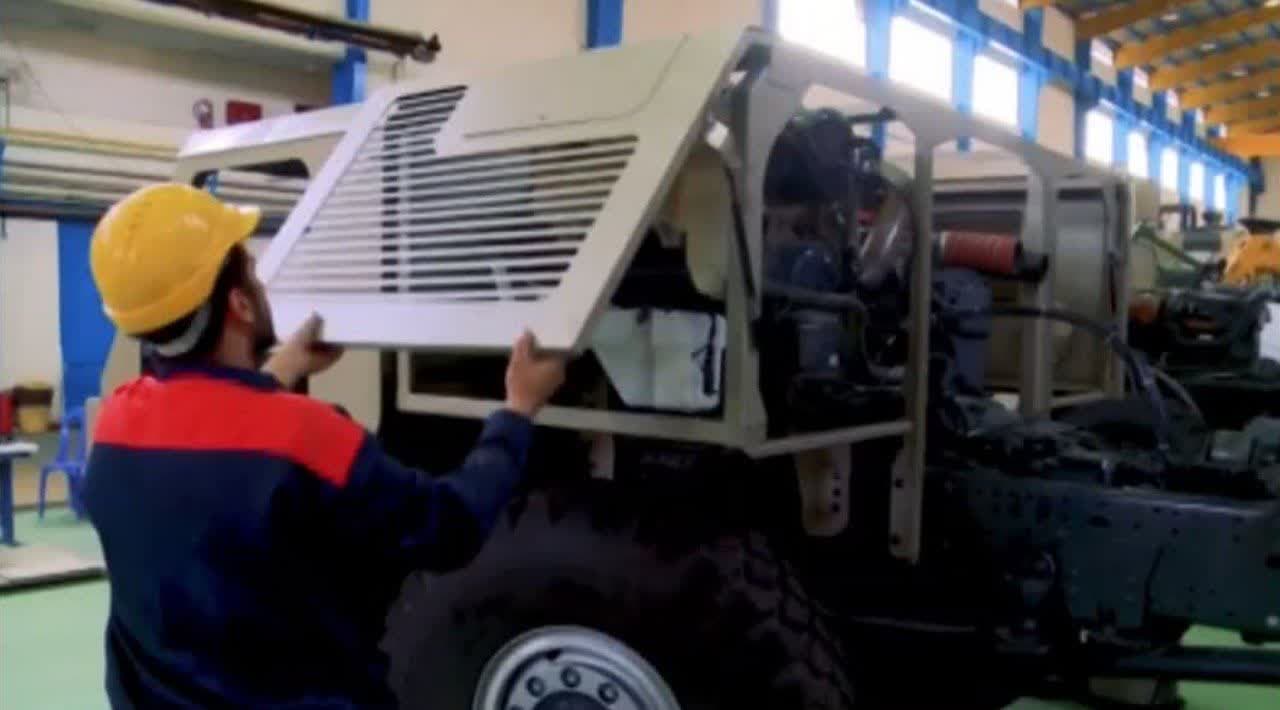
Sevom Khordad radar:
As mentioned, Sevom Khordad system has received many updates in the field of missiles and radar. For a better review, we will look into the radar systems used in Sevom Khordad.
Sevom Khordad and Tabas systems were unveiled simultaneously in 2014. Tabas was introduced as an inexpensive supplement to Sevom Khordad system; Initially, both systems, as a high-altitude and medium-range system, had the ability to engage at an altitude of 25 to 27 km and a range of 50 km, but Sevom Khordad has an active phased array radar and Tabas has a flat reflector radar with limited rotation power.
The declared altitude of fire was exactly the same as the range of Buk-M2EK system, i.e. 50 km, which raises the suspicion that the systems are the same. But the differences in the carrier chassis that we reviewed earlier and the use of three missiles in the Iranian systems instead of four missiles in the Russian system, rejected this suspicion. Also, the installation location of the middle fin of Buk missile and Taer missile is different. In the Taer missile, the middle fin is near the end of the missile, while in the Buk missile, the middle fin is located in the middle of the missile.
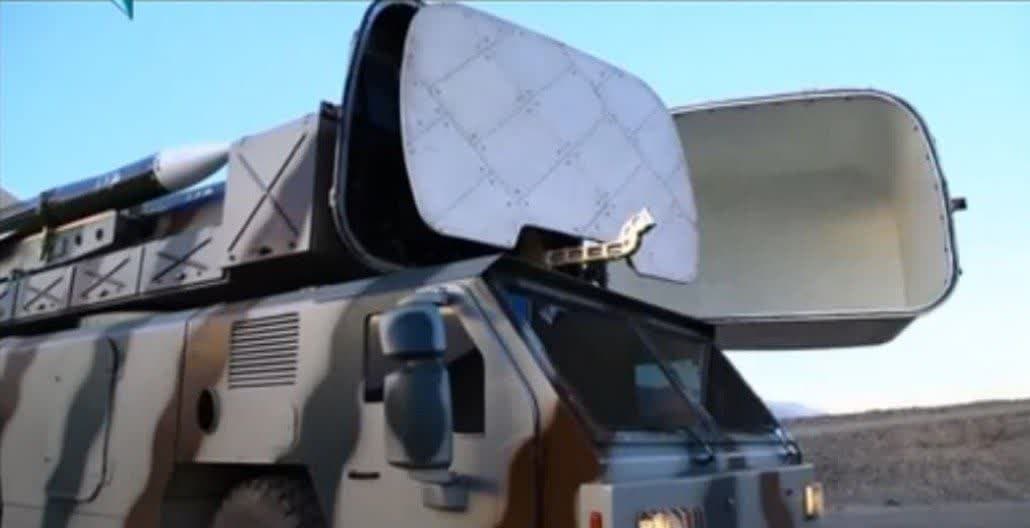

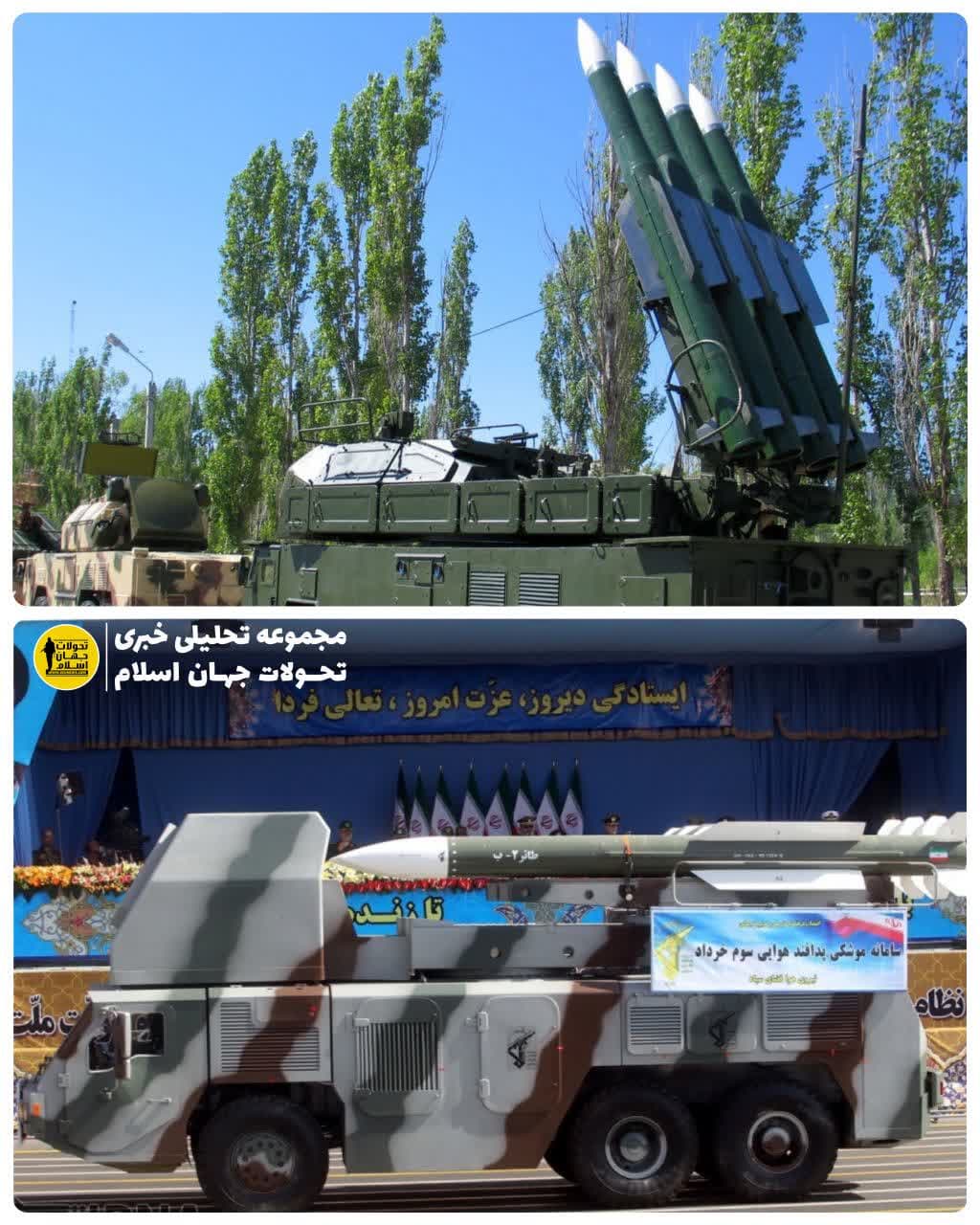
In order to better examine the Sevom Khordad radar systems, we must start with the evolution of this system and from its starting point, the Raad system. Contrary to what was seen at the time of the unveiling of Raad system, Raad 1 and 2 systems were installed on commercial trucks. Probably, the reason for using commercial trucks was that the capacity of production line for the prototype was not enough or that the unveiled model was under development.
The investigation of the primary radars used in the Raad system shows that Raad used pulse doppler radars and its combination with its optical systems, and the whole system was mounted on a commercial truck. So, it seems that the chassis developed for Sevom Khordad was not supposed to be used for the Raad system at all; Rather, the Raad system could be a system similar to Sevom Khordad but for urban and passive warfare; which has used a commercial truck for the carrier for better camouflage, and has the ability to link to TEL variant that only carry missiles.




Alam al-Hoda system is another system related to Sevom Khordad. Alam al-Hoda system is actually a complementary system for the whole collection.
Although the exact image of the Alam Al-Hoda radar is not available and its exact range has not been announced, the radar of this system is similar to the Nebo-UE radar. The Nebo-UE radar is a 3D radar in the VHF band with a range of 310 km; But the radar used in the Alam Al-Hoda defense system is a fire control phased array radar in the VHF band.
Nevertheless, it is noteworthy that after several years since the unveiling of Alam Al-Hoda radar, quality images showing the operationality of such a system have not been published. Therefore, probably, the Alam Al-Hoda system has not been widely implemented or used.
There are two possibilities for this system:
1- Considering that Iran has the experience of building the Keyhan mobile radar with a range of 2000 km, the Alam A-Hoda radar is also a very long range radar with a detection range of 500 km and more, which, unlike the nature of VHF band radars, has a very accurate detection capability to detect stealth targets from long distances and is linked with the Sevom Khordad system or any other system and acts as a long-range radar for the Sevom Khordad battalion.
2- The second possibility is that the Alam Al-Hoda system was actually a development plan for the Sevom Khordad system, which was later led to the use of Bashir radar. Bashir radar can detect cruise and stealth targets and other long-range targets at a range of at least 350 km.


In general, the Sevom Khordad system consists of three components: Transporter Erector Launcher Radar (TELAR), Transporter Erector Launcher (TEL) and Bashir long range radar for early detection of hostile targets.


Until now, not so many images of the Sevom Khordad radar system have been published, and reliable information about the height of the conflict and its range has not been provided by the official authorities; But what is clear is that this radar has continuously developed since its unveiling in 2014. According to the available information, this radar is an active phased array (AESA) radar in the X band with 1700 elements, which can simultaneously detect 4 targets and guide 8 missiles (two missiles for each target).
The altitude of fire for this radar can be estimated up to 30 km, and the range of this radar has probably reached more than 200 km. The reason for this is the presence of Sevom Khordad long-range (Taer-3) missile with a range of 200 km, which was unveiled at Iranian Armed Forces parade on commemoration of the Sacred Defense Week on September 22, 2022.
Bashir radar:
The Bashir radar, which is one of the important components of the Sevom Khordad system, is a 3D phased array radar with linear antenna arrays that operates in the L and S bands and is capable of detecting cruise and stealth targets. The maximum range of Bashir radar is 350 km. This radar, which was unveiled and used in the Welayat 97 military exercise in February 2019, is installed on a truck and is placed at a certain height by opening jacks and then rotates to cover 360 degrees. Evidence that Bashir radar has the ability to be used as a fire control radar has not been obtained to date; Therefore, the previous assumption that the main radar of the Sevom Khordad has a maximum range of more than 200 km, can be correct.
In the Sevom Khordad system, the entire complex, i.e., missiles, radar, and control station, are all mounted on one vehicle, so Sevom Khordad is able to perform missions completely independently. But its main radar, which is responsible for detecting and locking on the target and then intercepting and guiding the missiles, can only operate in one direction and does not have the ability to engage in four directions at the same time. This is the main weakness of the Sevom Khordad system, and if it is used independently, it will be surprised and vulnerable to attack from several different directions.
Therefore, Bashir radar, as a very important part of this system, is an important factor in the stability of the Sevom Khordad system in the battlefield, to detect cruise and stealth targets and to constantly monitor the environment around the Sevom Khordad system. With the presence of Bashir radar in this system, it is possible to monitor the surrounding environment in 360 degrees, and by using four Sevom Khordad systems in one battalion, surprise and destruction of the system is prevented.
Each battalion of the Sevom Khordad missile system includes a control station that is responsible for coordinating the Bashir radar and four TELARs of the Sevom Khordad system. Bashir radar is also responsible for 360-degree scanning of the surrounding environment in the battalion. Each TELAR vehicle can also coordinate with two TELs in the battalion, in addition to coordinating with Bashir radar and control station. As a result, each battalion includes a control station, a Bashir radar, four Sevom Khordad systems (TELAR) and eight TELs, with a total of 36 missiles serving a Sevom Khordad air defense system battalion.


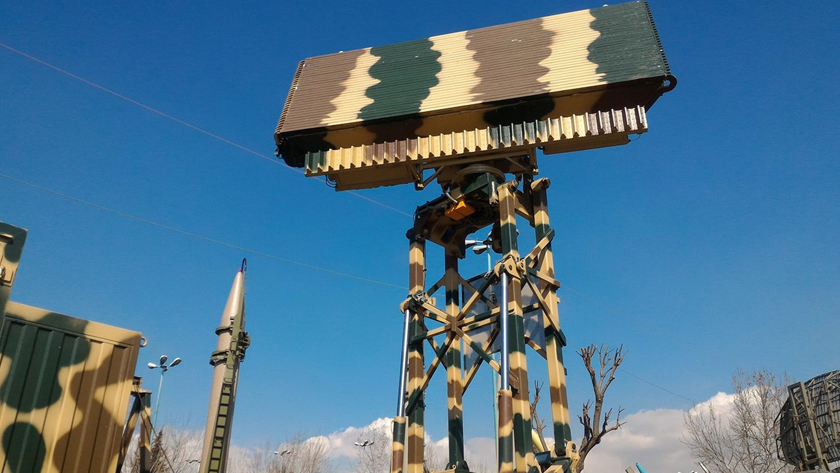
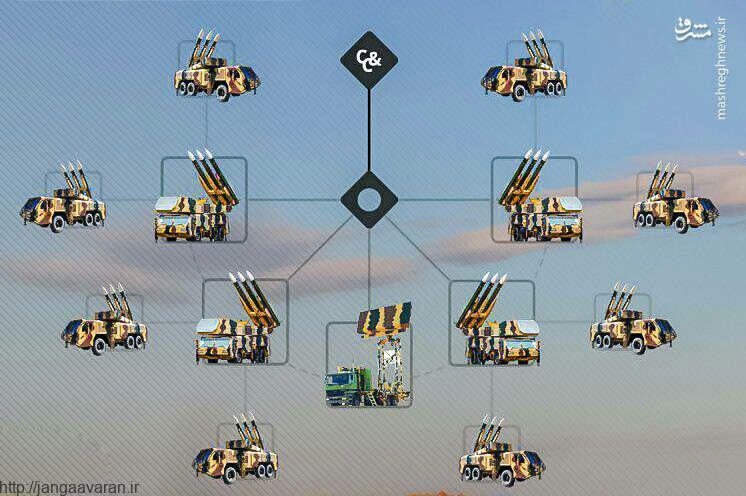
The number of missiles used in the Sevom Khordad missile system is varied. These missiles include: Taer-2, Taer-2A, Taer-2B, Sayyad-2, Sayyad-2C, Sayyad-3, 9 Dey and the Sevom Khordad (Taer-3) long-range missile.
The existence of this number of missiles in different ranges can be considered one of the distinctive aspects of this system, because it gives the Sevom Khordad system the ability to perform various missions. In fact, the Sevom Khordad missile system today is not a BUK class system, but an S-300 class system. The comparison between the two may seem far-fetched, but by looking at the S-300 system, we will realize that this system also uses a large number of missiles with different ranges and different altitudes of fire. Only the 40N6 missile that used in the S-300 PMU-3 or S-400 air defense system, has a longer range than the Sevom Khordad missiles. So practically today, the Sevom Khordad system has capabilities close to the S-300.
Regarding the 9 Dey missile, it is necessary to mention that this missile, unlike other missiles of the Sevom Khordad system, is launched from a box launcher that is specially made for the 9D missile. Therefore, sometimes this launcher is mistakenly considered another independent systems under the title “9 Dey Air Defense System”, which is not true. Rather, this system is the same as the Sevom Khordad system, but with a special box launcher for launching 9 Dey missiles.

Range and flight ceiling of active missiles in the Sevom Khordad system
The range and flight ceiling of active missiles in the Sevom Khordad system are:
Taer-2: with a range up to 50 kilometers and flight ceiling of 27 kilometers
Taer-2A: with a range up to 75 kilometers and a flight ceiling of 27 kilometers
Taer-2B: with a range up to 105 kilometers and a flight ceiling of 27 kilometers
Sayyad-2: with a range up to 75 kilometers and a flight ceiling of 27 kilometers
Sayyad-2C: with a range up to 120 kilometers and a flight ceiling of 27 kilometers
Sayyad-3: with a range up to 150 kilometers and a flight ceiling of 30 kilometers
9 Dey: with a range up to 5 to 30 kilometers and a flight ceiling of 20 kilometers
Taer-3 (Sevom Khordad): with a range up to 200 kilometers and a flight ceiling of 30 kilometer
The first missile of this system is the Taer-2 missile, this missile and the Taer-2B missile are the first missiles that have been seen on the Sevom Khordad, Tabas and Raad system. After that, Sayyad-2 and then Sayyad-3 were adopted for Sevom Khordad system, and until Taer-3 was produced, the longest range missile of this defense system was Sayyad-3 with a maximum range of 150. Finally, with Taer-3 (Sevom Khordad) missile, with a range up to 200 km, this missile became the longest-range missile of the Sevom Khordad system.




As for the missiles used in the Sevom Khordad system, there are two missile families: the Taer family and the Sayyad family. The difference in the appearance of these two families, as shown in the picture, is more evident in the middle fin; Of course, there are differences in the fin at the end of the missile. But in each generation, the middle fin has a fixed shape, the main reason for which was the pattern of each missile at the time of its design and construction.
In the Sayyad family, the missile is modeled after the standard missile, and in the Taer family, the missile is designed and built based on the model of the BUK family.
The middle fin of the Sayyad missile is a trapezoid, both edges of which are angled and extends to the body of the missile. But in Taer, the shape of the middle fin is a trapezoid, one edge of which is vertical and the other edge of which is angled. Due to this difference in appearance, we classify the Sevom Khordad (Taer-3) missile in the Taer family.
Another point is that the Taer missile has a radar to detect targets in the last stage. However, there is still no information about the presence of such a radar in Sayad-2, Sayad-2C and Sayad-3 missiles. It means that the Taer missile is likely to have the ability to detect the target independently, and the Sayyad missile needs to be guided until the moment of impact.


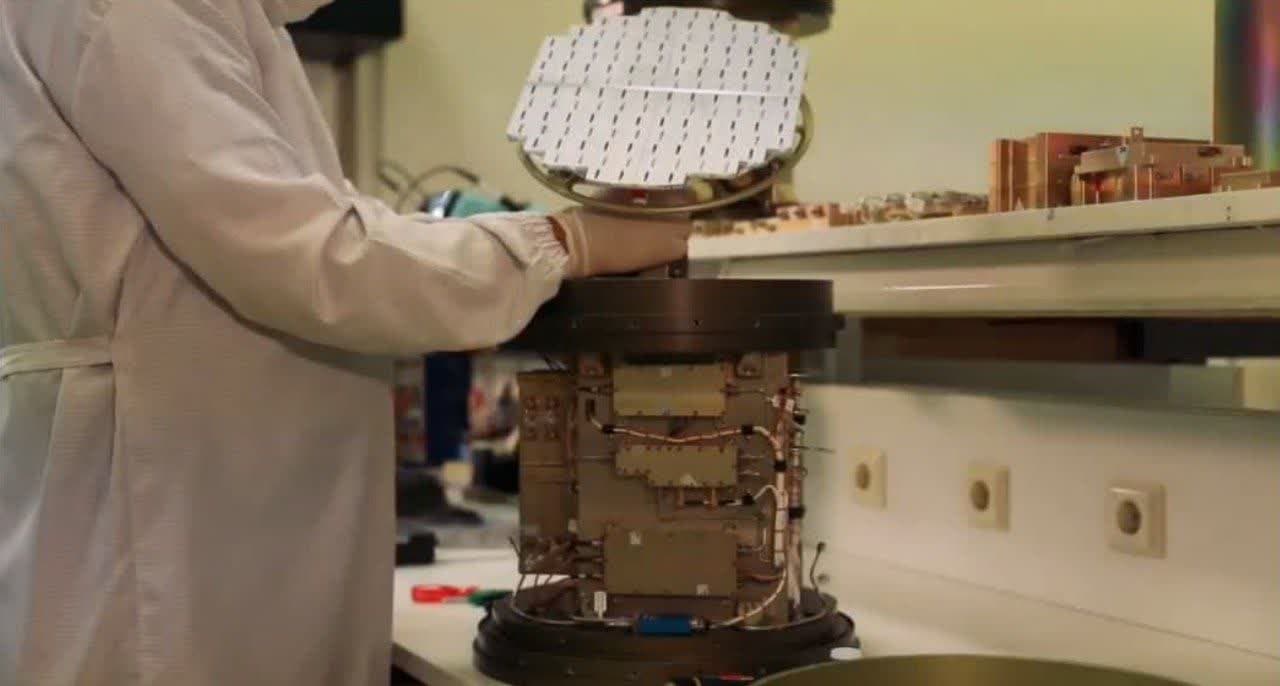
The next subject about Taer family missiles is that the radome part of the missile is made separately. This feature makes it possible to build a missile with different guidance capabilities at the lowest cost; This has led to the construction of the Taer-2 passive guided missile for the Sevom Khordad system. There is also a version of the Sevom Khordad system that provides the possibility of passive missile guidance at the same time as radar guidance. It is not clear exactly how passive guidance is implemented in the Sevom Khordad system and how it works.
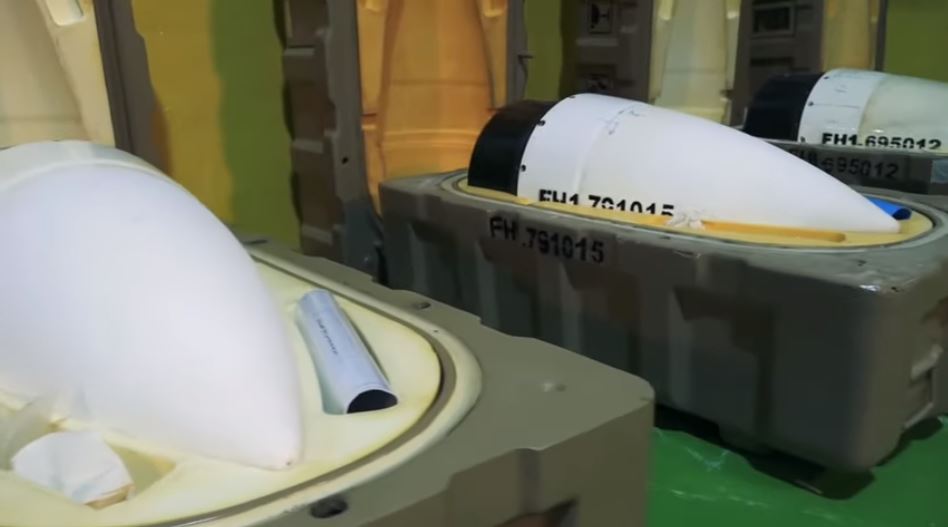


The sea-based version of the Sevom Khordad system was seen for the first time on the Shahid Siavashi ship of the IRGC along with the passive version of this system. Also, the IRIS Shahid Roudaki was unveiled along with the Sevom Khordad system; Therefore, it is possible to make this system operational with Shahid Roudaki.
A version of the Taer missile was displayed in the National Aerospace Park of Iran, which identified its various components separately, for example, the location of the missile warhead is located behind the missile’s radar. Also, the Taer missile warhead was displayed, which is a high explosive fragmentation (HE-FRAG) warhead.



The missiles used in the Sevom Khordad system have another feature, which is the use of proximity sensors such as the Meteor air-to-air missile. This sensor allows the missile to explode near the target and minimizes the need for a direct missile hit. Proximity sensors in the form of strips have been seen on all 9 Dey, Sayyad-2, 2C and 3 missiles as well as Taer 2 and 3.
Taer missiles have a special flight profile, and in the published footage of how this system works, two points are noteworthy for these missiles. The first point is the flight profile of the Taer missile to deal with cruise missiles, which flew at a distance of several meters from the surface, and this type of flight is very practical. The next point is the missile hit with targets with a higher height. In the published images, the missile hits the target from above, and as stated, with the presence of proximity sensors intended for the missile, this missile does not need a direct hit.
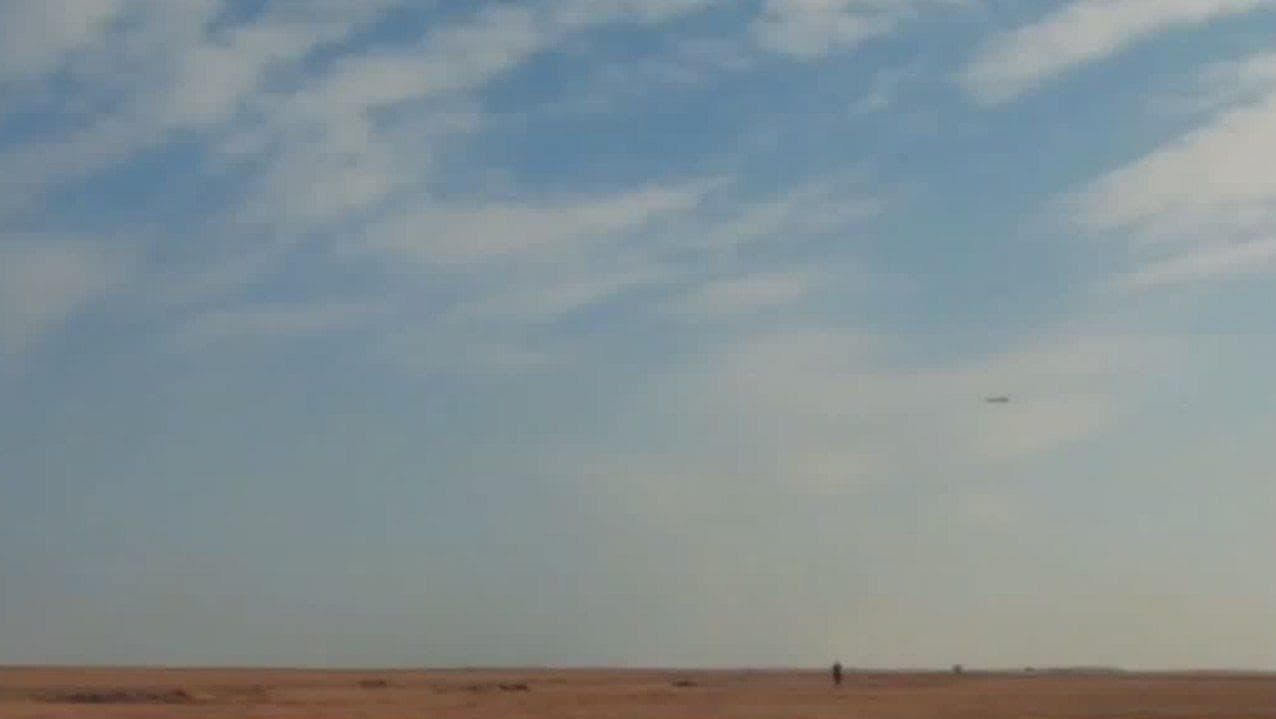


The control station in the TELAR launcher of the Sevom Khordad system is located beneath the missiles and behind the engine of the carrier vehicle, which is an equipped and fully digital station. Each Sevom Khordad system is connected to a Bashir radar and control station to perform the task of aerial surveillance with greater accuracy.
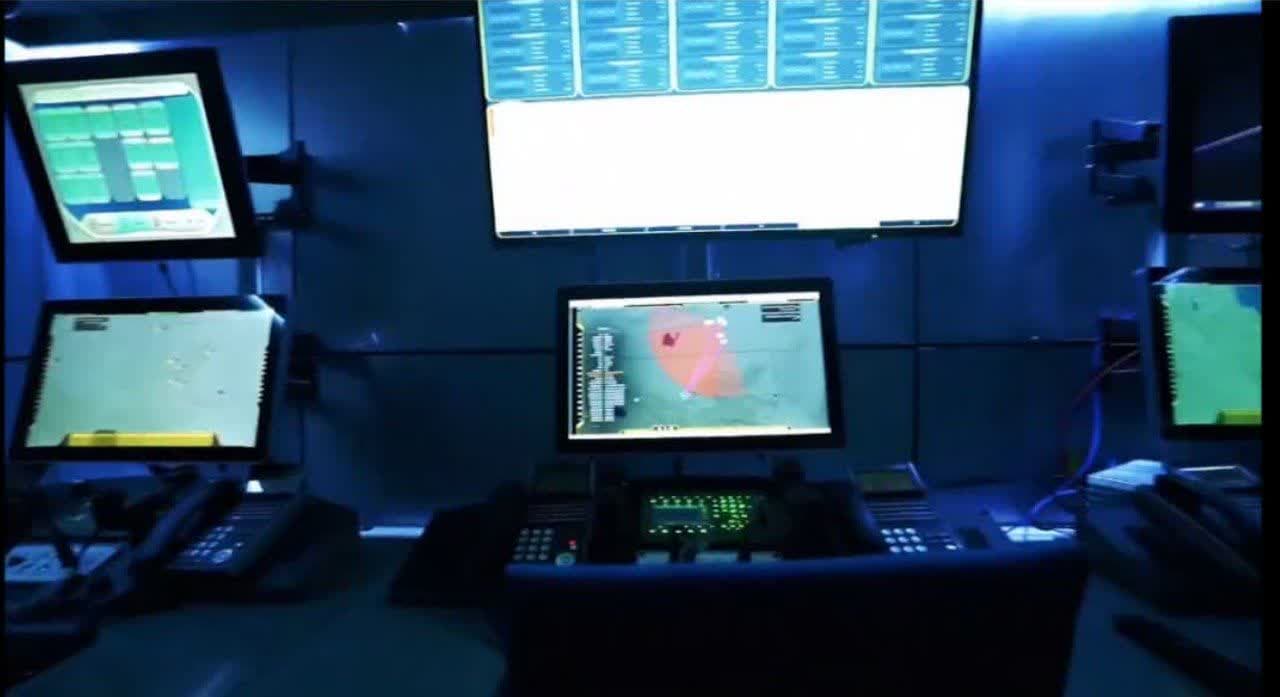
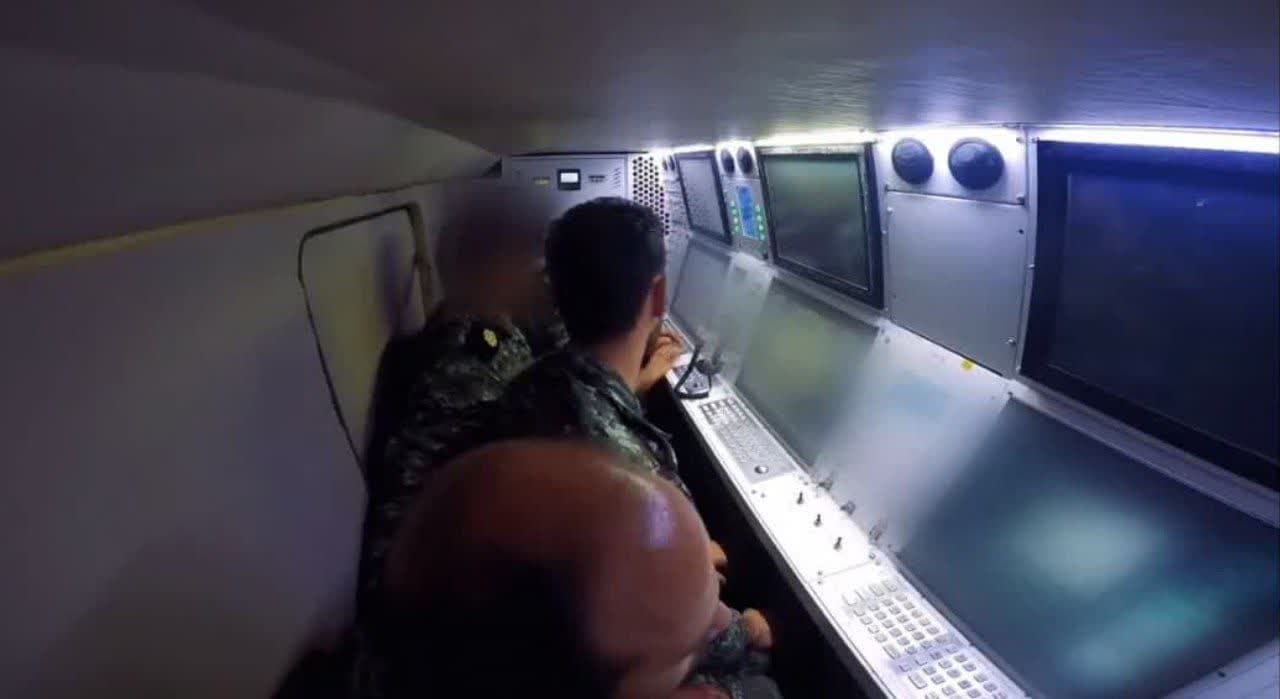
The possibility of linking Sevom Khordad with other systems:
Since Sayyad missiles links to the Sevom Khordad radar, it seems that other systems that currently use Sayyad missiles can also link to the Sevom Khordad system; Such as the Najm-802 radar, which is used for the early warning radar of the Talash system and 15 Khordad as the user of the Sayyad missile. Of course, another possibility can be proposed for the Sevom Khordad system, and that is to link this system with the Bavar-373 system so that Taer missiles can also be used in the Bavar system. Although what was said about the coordination of the Sevom Khordad system is only speculation, but considering the background of the mentioned systems, the use of Sayyad missiles on the Sevom Khordad is also not far from the mind.
Read more: Military Knowledge: Bavar-373 Long-Range Air Defense System
The final combination of missiles in the Sevom Khordad system:
It seems that the combination of missiles operating in the Sevom Khordad system has reached a smaller set today, which shows the independence of the system in the field of production, service and operation in the IRGC combat organization. In its evolution, the Sevom Khordad system has reached three missiles, which are perfectly suitable for three types of conflicts. The first missile is the 9 Dey missile, which is suitable for engagement in the last ring of defense and a range of 5 to 30 km, and its engagement height is 20 km; The ability to fight at this level is excellent. But the second missile is the Taer-2 missile, which has a range of 30 to 105 km at an altitude of 25 to 27 km. The third missile, the Taer-3 missile, as a long-range missile of this system, gives the Sevom Khordad system the ability to fight from a range of 100 to 200 km. The Sevom Khordad missile system achieves a very good operational efficiency with such a combination. Of course, it is still possible to use Sayyad family missiles on Sevom Khordad.
Weaknesses of the Sevom Khordad system:
The only problem that the Sevom Khordad system has in the missile section is a missile suitable for targeting ballistic missiles. By adding such a missile to this system, as well as correcting the radars for engagement with ballistic missiles, this system will be a powerful and much more efficient system. Of course, it has been said that this system has the ability to engage targets up to 1000 km/h, which is a very good number.
Another weakness of this system (if it is used independently) is the lack of 360 degree coverage, which is largely solved by the Bashir radar.

Operational history of Sevom Khordad:
On June 20, 2019, Sevom Khordad missile system managed to shoot down an American RQ-4A Global Hawk drone over the Strait of Hormuz and near Mubarake Mountain. RQ-4A drone was detected by the early warning radar at a distance of 490 km and at a distance of 120 km, Sevom Khordad did a radar lock on it and finally the missile hit the RQ-4A at a distance of 75 km and at an altitude of 14 km and destroyed it. It should be noted that the Sevom Khordad air defense system became known as the “Vulture Hunter” after shooting down the US RQ-4A.
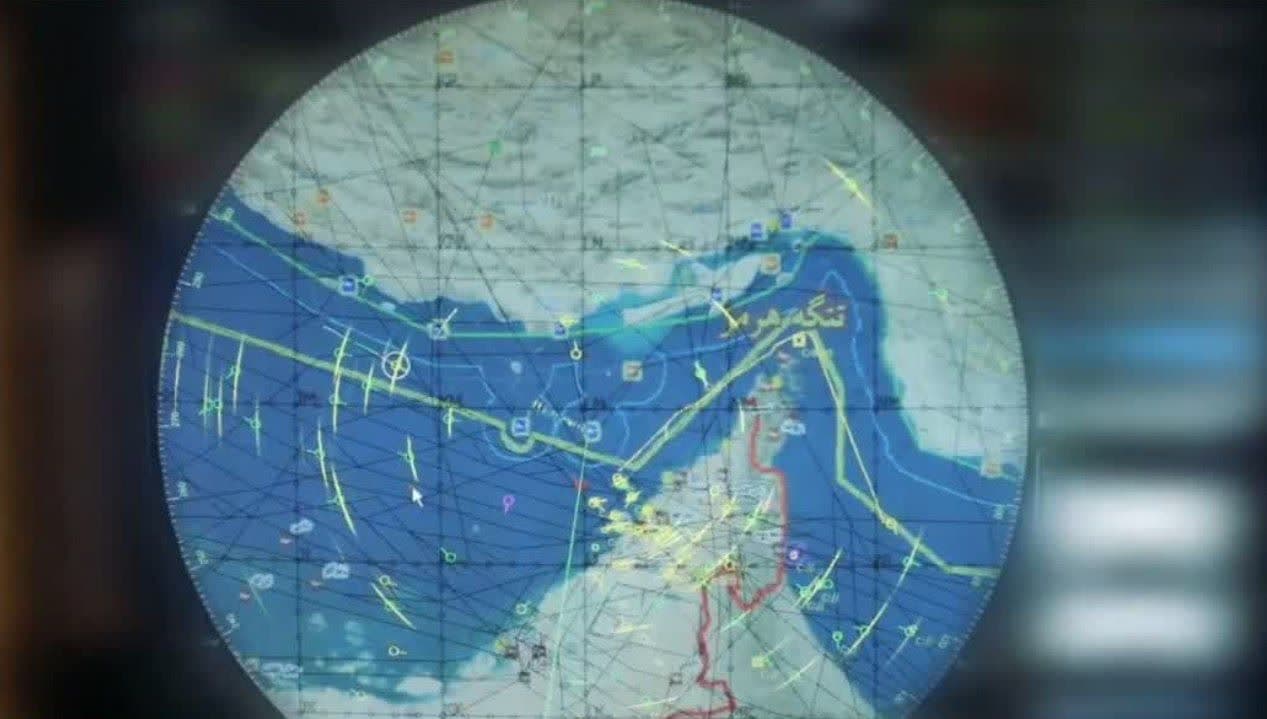

Specifications of Sevom Khordad air defense system:
Type: Fully mobile high-altitude long-range missile defense
Length: 8.9 meters
Width: 2.5 meters
Height: 2.5 meters
Range: 200 km
Altitude of fire: 30 km
Number of simultaneously engaged targets: 4 targets
Number of simultaneously guided missiles: 8 missiles
Missiles: Taer-2, Taer-2B, Sayyad-2, Sayyad-2C, Sayyad-3, 9 Dey, Taer-3
Fire-control radar: The name is not specified with a range of more than 200 km and installed on the TELAR vehicle
Search radar: Bashir radar with a range of 350 km
9 Dey missile (with a special launcher):
Range: 5 to 30 km
Altitude of fire: 20 km
Length: 3.8 m
Diameter: 25 cm
Weight: ~ 240 kg
Taer-2 missile:
Range: 30 to 105 km
Altitude of fire: 25 to 27 km
Length: 6.10 m
Diameter: 40 cm
Weight: ~ 1000 kg
Taer-3 missile:
Range: 100 to 200 km
Altitude of fire: 27 to 30 km
Length: 6.55 m
Diameter: 47 cm
Weight: ~ 1400 kg

More images of Sevom Khordad air defense system:


















The collection of posters of Sevom Khordad air defense system in Russian, Arabic, Farsi, Azeri, Kurdish:





Source:
Nebo-UE 3-D VHF Surveillance radar
نمایشگاه بین المللی هوا فضای ماکس-2011 روسیه
«علم الهدی» ناشناختهترین سامانه شکار جنگندههای رادارگریز
Buk-M2EK
MZKT-6922
MZKT
سامانه های پدافندی خانواده رعد
Transporter erector launcher

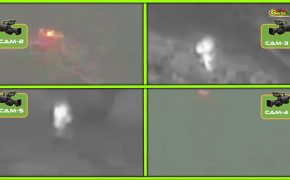

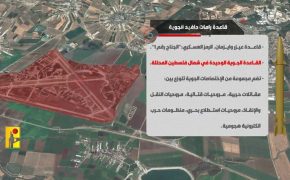
Comment